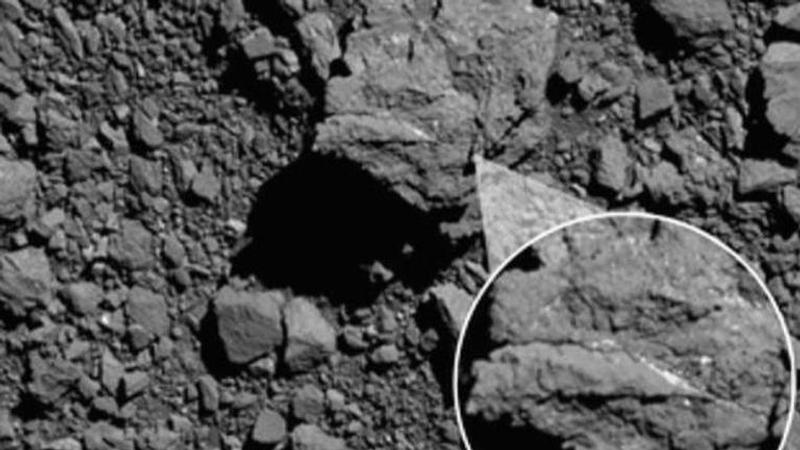Published 18:25 IST, October 10th 2020
Asteroid Bennu contains crucial component of RNA, block of 'life': Study
OSIRIS-Rex spacecraft took samples of rocks during its mission for the scientific study, which found new insights about Asteroid Bennu.

NASA has discovered Ribose, a crucial component of RNA (ribonucleic acid), and other bio-essential sugars on the asteroid Bennu. In a paper published in Proceedings of the National Academy of Sciences of the United States, scientists revealed that the OSIRIS-Rex spacecraft took samples of rocks during its mission for the scientific study, which found new insights about Bennu. The Discovery of organic material on the asteroid, which is the building blocks of life, was published in six papers published in the journals Science and Science Advances.
“Asteroids are composed of the leftover material from the birth of the Solar System, and hence contain answers to the lingering cosmic mysteries,” planetary scientist at NASA's Goddard Space Flight Center and lead author of one of the recent studies on Bennu, Amy Simon said in the study.
Bennu is a dark, near-Earth asteroid averaging 4.4 percentage of reflectance, which implies, it is the collisional remnant of the main asteroid belt in-universe. It is known as the C-complex asteroid due to high carbon content, while the B-complex asteroids have bluer spectra, the study revealed. Therefore, this asteroid was found to contain rich silicates, hydrated minerals, organic molecules, magnetite, and sulfides. Scientists launched an OSIRIS-REx mission in the year 2016, Spectral Interpretation, Resource Identification, and Security-Regolith Explorer ]to obtain the carbonaceous material from the asteroid’s surface.
“One of the mission objectives is to compare ground-based Bennu data with the resolved surface to help interpret unresolved observations of other asteroids,” the scientists said in the research.
Bennu was also suspected to belong to the Mars and Jupiters’ main asteroid belt that originated in the Polana or Eulalia family. earlier, an asteroid Ryugu which was a C-complex asteroid was found to have hydration feature. After the OSIRIS-REx mission completed a close-proximity observation of Bennu, scientists studied the features of the asteroid to find that it contained a messenger molecule RNA (ribonucleic acid) essential for copying genetic instructions from the DNA molecule and delivering to molecular factories within the ribosomes cells that build proteins needed to carry out life processes.
“The sugar in DNA (2-deoxyribose) was not detected in any of the meteorites analyzed in this study,” said Danny Glavin, a co-author of the study at NASA Goddard. “This is important since there could have been a delivery bias of extraterrestrial ribose to the early Earth which is consistent with the hypothesis that RNA evolved first.”
[This is a model of the molecular structure of ribose and an image of the Murchison meteorite. Ribose and other sugars were found in this meteorite. Credits: Yoshihiro Furukawa/ NASA]
Contamination due to terrestrial life
“Other important building blocks of life have been found in meteorites previously, including amino acids (components of proteins) and nucleobases (components of DNA and RNA), but sugars have been a missing piece among the major building blocks of life,” said Yoshihiro Furukawa of Tohoku University, Japan, in a NASA release. “The research provides the first direct evidence of ribose in space and the delivery of the sugar to Earth. The extraterrestrial sugar might have contributed to the formation of RNA on the prebiotic Earth which possibly led to the origin of life,” he added.
The research is key to decoding the origin of life and biology operating a living organism. The Discovery of sugars in the meteorites signals at the contamination due to the presence of the terrestrial life, scientists in the NASA release claimed. The discovery was made after analyzing powdered samples using gas chromatography-mass spectrometry. “Sugars ranging from 2.3 to 11 parts per billion in NWA 801 and from 6.7 to 180 parts per billion in Murchison were found,” scientists said.
(Image Credit: NASA)
Updated 18:25 IST, October 10th 2020




